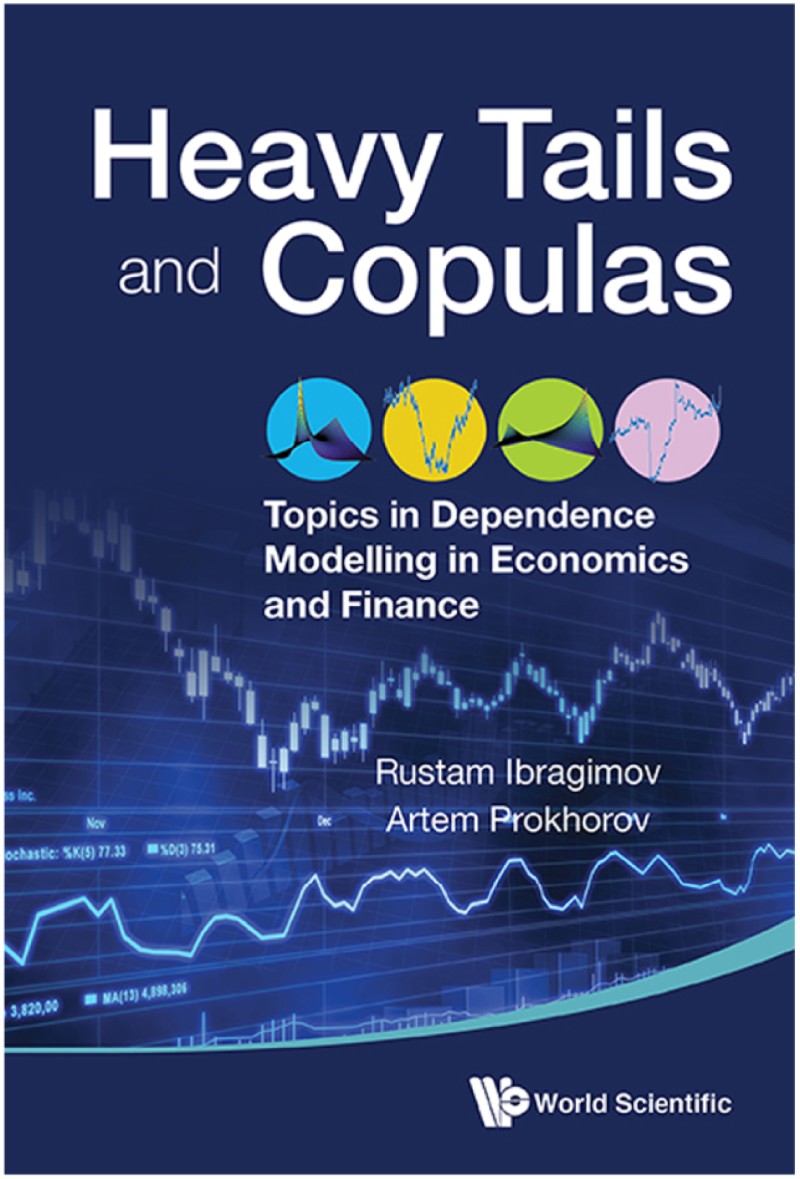© 2017, World Scientific
This mathematical book, written by two of the leading experts in the field of heavy tails and dependence, focuses on portfolio diversification with heavy-tailed risks under a variety of dependence assumptions.
The book embraces the view of a world affected by heavy-tailed events. A large number of studies in economics, finance, and insurance have documented risks with heavy tails. Especially for certain kinds of data, particularly insurance claim data and operational loss data, statistical investigation quite often indicates random variables with an heavy tail. As described in the introductory part (Chapter 1) of the book, many events in the stock market are a clear product of heavy-tailedness and asymmetric tail dependence.
Heavy-tailed models (distribution functions with a power tail decay) have a significant effect on the quantification of the Value-at-Risk of a portfolio of risks, and might reverse the common wisdom about portfolio diversification: under extreme heavy-tailedness, diversification increases portfolio riskiness.
This reversed diversification effect is the main scope of the book, and the two authors are amongst the pioneer scholars who have studied this fallacy in recent years.
Chapters 2 and 4 constitute the core of the book, including a comprehensive review of all results appearing in the field of portfolio diversification under heavy tails and, for the most substantial part, due to the authors of this book.
Chapter 1 briefly introduces in a concise way the main mathematical tools needed for the subsequent analysis, namely stable and power law distributions, and copulas.
In Chapter 2, majorization results for linear combinations of independent heavy-tailed risks are discussed and applied to study portfolio diversification under Value-at-Risk.
The theory of majorization goes back to a milestone inequality of Hardy, Littlewood and Polya, and has recently discovered a second youth in quantitative risk management due to the many applications to risk measure ordering.
Chapter 3 introduces dependence using copulas and so-called U-statistics.
Copulas are nowadays the most widely used tool to model (tail) dependence, and are presented and characterized here from a different and interesting angle with respect to the standard literature.
In fact, any distribution function and copula function is represented by U-statistics, which are simple functions of independent random variables.
This new approach is particularly useful as it allows for the derivation of new theoretical results in time series analysis, the discussion of new (multivariate) measures of dependence and the study of important features of dependent time series, including Markov processes of an arbitrary order.
Via the use of U-statistics, Chapter 3 sets the stage for the extension of the results treated in Chapter 2 to a broader variety of dependence assumptions.
Chapter 4 revisits the question raised in Chapter 2 of when portfolio diversification does or does not work, under a variety of dependence models especially useful in banking and insurance, including the treatment of a common shocks model.
Chapter 5 includes a rigorous treatment of estimation methods for copula models with a focus on robustness of copula-based models to copula misspecification. Nowadays this is a sensible subject under the umbrella of dependence uncertainty. Selected aspects of robustness to heavy tails are also considered.
As an application of the results discussed in Chapter 5, Chapter 6 includes tests of copula validity based on the information matrix equality.
Overall, the book is highly technical, including full mathematical proofs of the results stated. Potential readers are post-graduate students or researchers in Quantitative Risk Management willing to have a manual with the state-of-the-art on portfolio diversification and risk aggregation with heavy tails, including the fundamental theorems as well as collateral (but most useful) results on majorization and copula theory.
Additional information
Notes on contributors
Giovanni Puccetti
Giovanni Puccetti is Associate Professor at the University of Milano, Italy. His main interests cover Quantitative Risk Management with an emphasis on Risk Aggregation and Dependence Uncertainty. He coauthored several algorithms in Applied Probability, including the Rearrangement Algorithm. He is Editor-in-Chief of Dependence Modeling.

